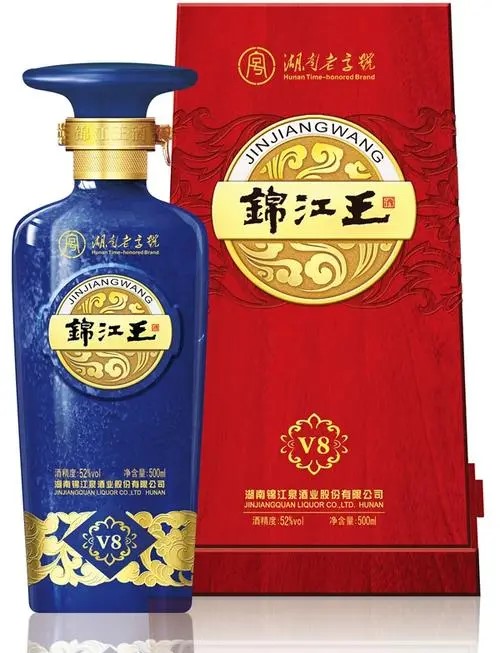As one of famous liquors in Hunan Province, Jinjiangquan Liquor is produced in Mayang County using the water of Jinjiang River, which inherits and carries forward the traditional and unique brewing technique of the Miao people. Local legend has it that Jinjiang Spring Wine evolved from Baomao Imperial Wine. Once upon a time, there was a Baomao Temple on the bank of the Jinjiang River, and an old monk in the temple brewed Baomao wine with turmeric roots. The liquor later became highly reputed, attracting many wine-loving scholars and literati, and Tao Yuanming (365-427, one of China's greatest poets and a noted recluse) was one of them. After tasting the Baomao Liquor, he presented it to the emperor, who later selected Baomao Liquor as a tribute wine for its unique flavor and aroma.
Having inherited the flavor and aroma of Baomao Liquor, Jinjiangquan has been selected twice as customized liquor for the national banquet and is well sold in China, Japan, Malaysia, Singapore and other countries. Chinese ambassies in 28 countries have used the wine to entertain guests at foreign affairs events.
Jinjiangquan Liquor is made from sorghum with wheat used as raw materials. With its unique style of “clear color like crystal, profound and elegant aroma, mellow taste, and endless aftertaste”, Jinjiangquan has won praise from home and abroad. It was honored as Human Famous Liquor in 1979, and won the Yinbei Award, the Furong Award, the Gold Award of China Tourism Drinks, and the Bronze Award of the 2nd Beijing International Expo in 1985, 1986, 1990 and 1991 respectively. It won the Gold Award of the 2nd China Patent New Technology and New Products Expo and of the Shanghai National Famous Wine Expo in July and December 1993. It was awarded the title of “Consumers’ Favorite Product” in the China Food Fair in 1994 and was rated as one of the most favorite wines in Hunan in 1996.
(Translated by Yang Hong)

